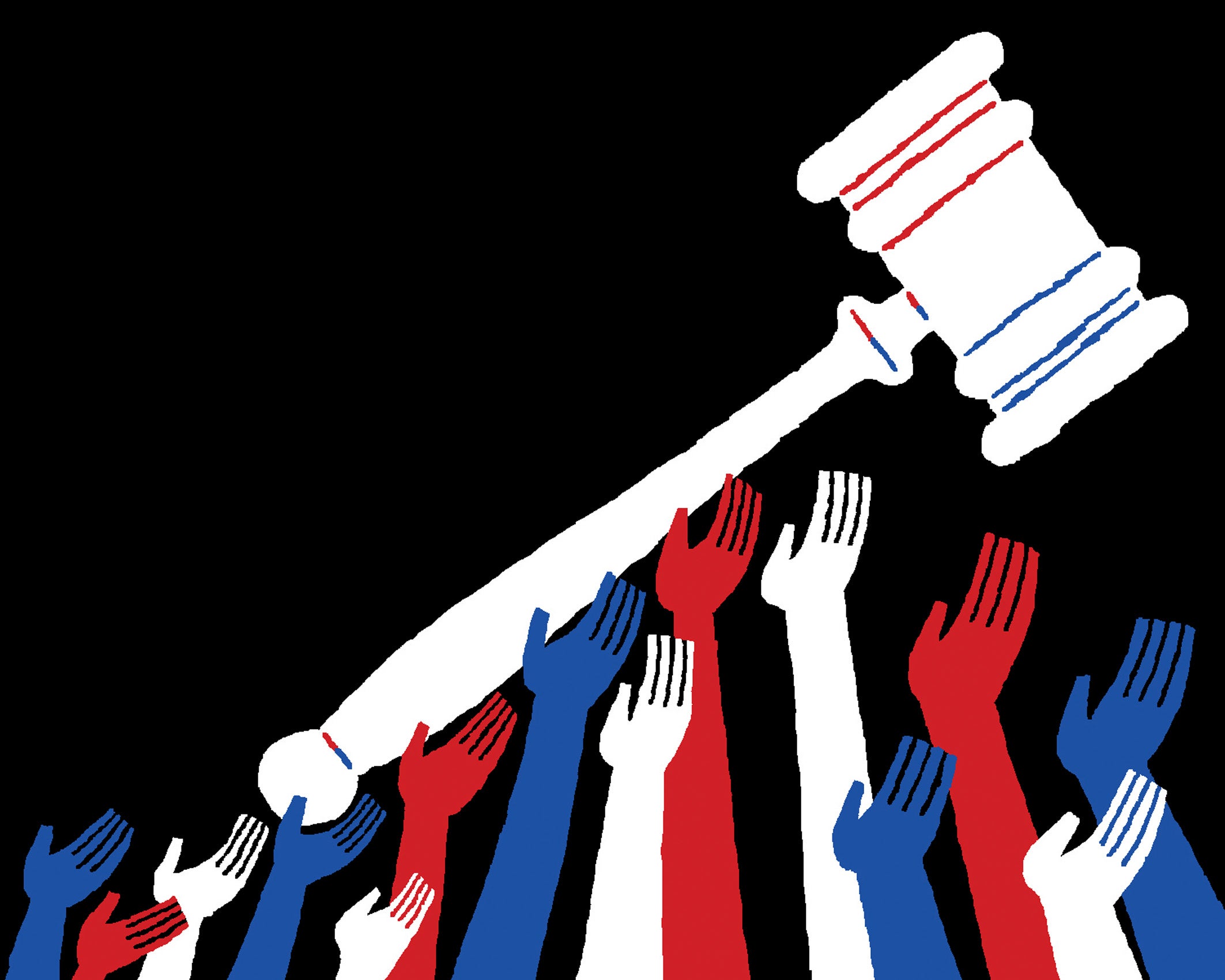Chief Justice of the United States John G. Roberts Jr. ’79 memorably used the metaphor of an umpire calling balls and strikes to explain that judges don’t make the rules but simply apply them. And just as umpires don’t root for one team over another, judges don’t care which side in a case wins.
Professor Mark Tushnet does not question the sincerity of the many judges who express similar views and contend that politics would never enter into their judicial decisions. He notes that judges tend to embrace philosophies like “originalism,” which adheres to the meaning of the U.S. Constitution’s original text, or “living constitutionalism,” which considers the current times we are in. But he says the evidence indicates that when it comes to politically sensitive issues, federal judges today almost always align with the policy preferences of the president who nominated them, reflecting the increasingly polarized political parties.
“It’s a complicated psychological phenomenon where judges for perfectly understandable reasons don’t want to think of themselves, as some people have described them, as politicians in robes,” Tushnet said in an interview. “And so they construct a self-image in which their policy views get filtered through what they think of as a more general, and in their minds, not political judicial philosophy. But judicial philosophies are conservative and liberal.”

As he describes in his new book, “Taking Back the Constitution: Activist Judges and the Next Age of American Law,” political coalitions that control government for an extended period can create what he calls a constitutional order, two of which have existed since the 1930s: the New Deal/Great Society, whose policies on expanding civil rights and the social safety net were supported by the liberal Warren Court, and the Reagan-influenced order of deregulation and smaller government backed by conservatives in the legal academy. Those orders can even influence leaders of opposing political parties, such as Bill Clinton declaring that the era of big government was over, mirroring a core Reagan tenet.
Tushnet writes that the United States may stand on the cusp of another constitutional order influenced by Trump-era social and economic nationalism, which would erode voter and abortion rights and bolster business interests and social causes like gun rights and religious liberty. He would prefer a progressive alternative, which could be facilitated by a Democratic president focusing more on the courts than previous Democratic administrations did. He also considers more controversial means to achieve progressive goals, such as adding to the number of justices on the Supreme Court, known as court packing, or ending the filibuster.
Yet he also advocates for a different kind of order, away from “judicial supremacy,” which considers the task of interpreting the Constitution as solely the province of the Supreme Court, an order focused instead on empowering ordinary people to shape Americans’ understanding of the meaning of the Constitution.
I think we have come to rely much too heavily on the courts as the vehicles for the expression and implementation of the Constitution.
“I think we have come to rely much too heavily on the courts as the vehicles for the expression and implementation of the Constitution,” Tushnet said. “So if somehow we could, as the book’s title says, take back the Constitution and put it into the hands of the public through popular constitutionalism, that too would be a good thing.”
By “popular,” he does not mean a survey determining whether a law is constitutional. Rather, popular constitutionalism would spring from social movements and political activism. For example, he points to legal efforts that failed to convince courts to overturn laws barring former prisoners charged with a felony from voting. Instead, the elected governor of Virginia revoked the rule, as did the people of Florida through the ballot. “Popular constitutionalism,” Tushnet writes in his book, “takes constitutional interpretation away from legal elites and returns it to the domain of popular self-government.” Such political movements are translated into law when judges accept popular interpretation, as has occurred with Second Amendment decisions protecting gun rights, or when lawmakers pass statutes that are likely to endure based on widespread public acceptance.
“It turns out that with appropriate political organizing and activity, people actually have decent views about what the Constitution should mean,” said Tushnet. “And so progressives and also conservatives should not be uncomfortable with popular constitutionalism. It makes discussion of the Constitution something like what politics is about.”
He concludes the book by considering the possibility of amending the Constitution or even developing a new one. Though it may seem sacrilegious coming from a professor of constitutional law, Tushnet asserted: “I have no doubt that [the Constitution] can be improved upon.” He envisions what he calls a “realistic utopianism,” which could advance policies even if some may argue they’re not constitutional, through “exceptionally creative interpretations” of the current Constitution or amending or revising the document. With this and other ideas, he seeks to “provoke people … to think seriously about where we are in our constitutional development, and where we might go, and what we might do to get to a better place than where we’re at now.”
